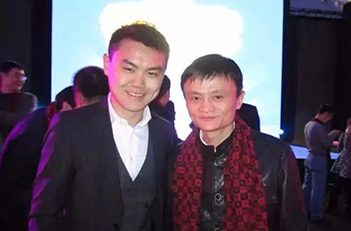The Pavilion of Prince Teng—the landmark of Nanchang
By Hu Kaiyong (chinadaily.com.cn) Updated: 2015-04-08 17:12
 |
|
An exterior view of the Pavilion of Prince Teng in Nanchang, East China’s Jiangxi province. (Photo provided by Nanchang Municipal Tourism Administration) |
Located in the northwest of Nanchang, capital city of East China's Jiangxi province, Tengwang Pavilion (The Pavilion of Prince Teng) is an imperial building more than 1,300 years old. It was first built in 653 by Li Yuanying, the son of Li Yuan, the first emperor of the Tang Dynasty, when he served as Hongzhou military governor. Yuanying was titled "Prince Teng" during the reign of Emperor Zhenguan (627-649), so the pavilion was named "Tengwang Pavillion." Together with Wuhan's Yellow Crane Tower in Hubei province and Yueyang Pavilion in Hunan province, it is one of the "Three Great Pavillions" of China.
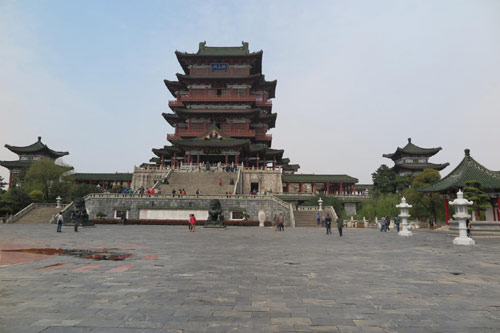 |
|
Front view of the Pavilion of Prince Teng in Nanchang, East China’s Jiangxi province. |
Although the Pavilion of Prince Teng was destroyed and rebuilt 29 times, which is rare in Chinese history, its unique charm and magnificence have been maintained. In January 2001, The Pavilion of Prince Teng was named by the China National Tourism Administration as one of the first state-level 4A tourist attractions. In 2004, it was approved by the State Council of China as a national key scenic spot.
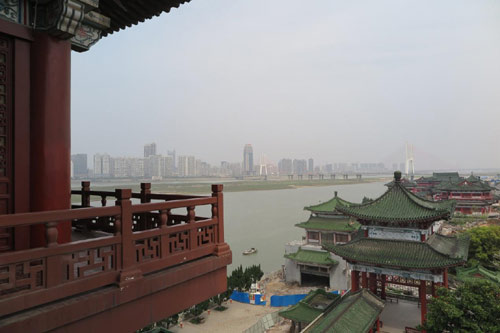 |
|
A view from the Pavilion of Prince Teng in Nanchang, East China's Jiangxi province. |
For thousands of years, the Pavilion of Prince Teng, with its rich cultural heritage, has been an ideal place for the literati in past dynasties to inscribe their poems. Generations of artists, writers and maestros visited the pavilion, and were inspired by its mysteriousness and beauty.
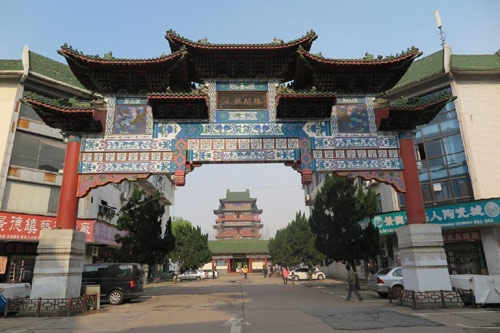 |
|
An exterior view of the Pavilion of Prince Teng in Nanchang, East China's Jiangxi province. |
To seek the cultural preservation of the Pavilion of Prince Teng, we had an exclusive interview with Zong Jiuqi, the author of Stories of the Pavilion of Prince Teng. According to him, the Pavilion of Prince Teng is a landmark building of the Yuzhang culture and the Chinese culture as well; the history of the pavilion also reflects humanity’s force of cultural continuity in past dynasties.
 |
|
An exterior view of the Pavilion of Prince Teng in Nanchang, East China's Jiangxi province. |
Speaking of the representations of the integration of the pavilion into the spiritof Nanchang locals, he said that the Pavilion of Prince Teng has been an auspicious building in the heart of Nanchang locals. The cultural stories passed down have not only reflected the desire for beautiful things, but also revealed local people’s character of taking things as they come. Nanchang locals may not realize their clinginess to the pavilion, only when they are somewhere in a foreign land. It is at such times that they will feel their cultural heritage and nostalgia for the Pavilion of Prince Teng, Zong said.
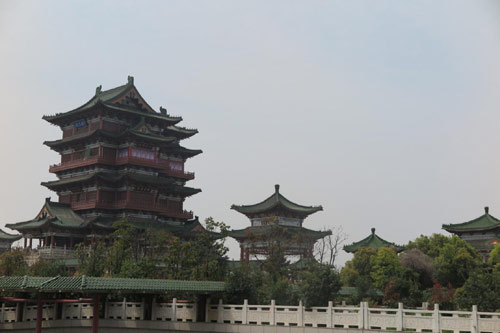 |
|
An exterior view of the Pavilion of Prince Teng in Nanchang, East China's Jiangxi province. |
Therefore, in Stories of the Pavilion of Prince Teng, he wrote that the pavilion's display shows very high cultural taste and that it demonstrates and displays the long and splendid cultural essence of the Chinese nation while reflecting the characteristics of the ancient civilization of Yuzhang. The Pavilion of Prince Teng, a truly elegant cultural shrine, has become the spiritual high point of Nanchang locals.
Translated By Yang Mifen









